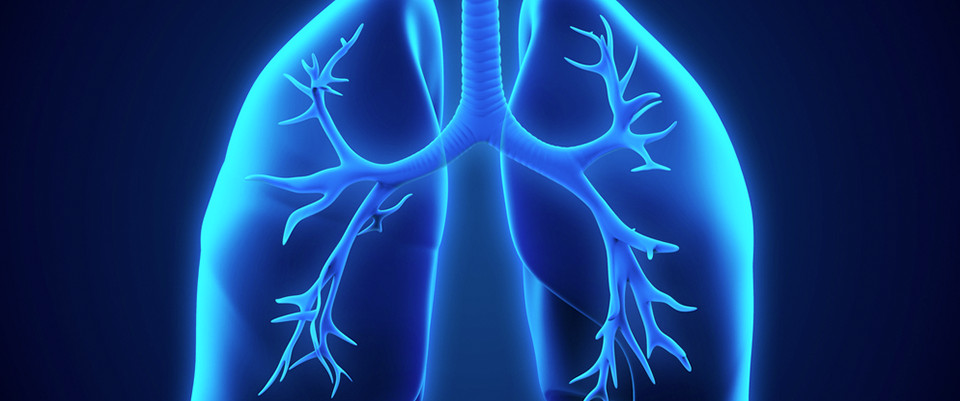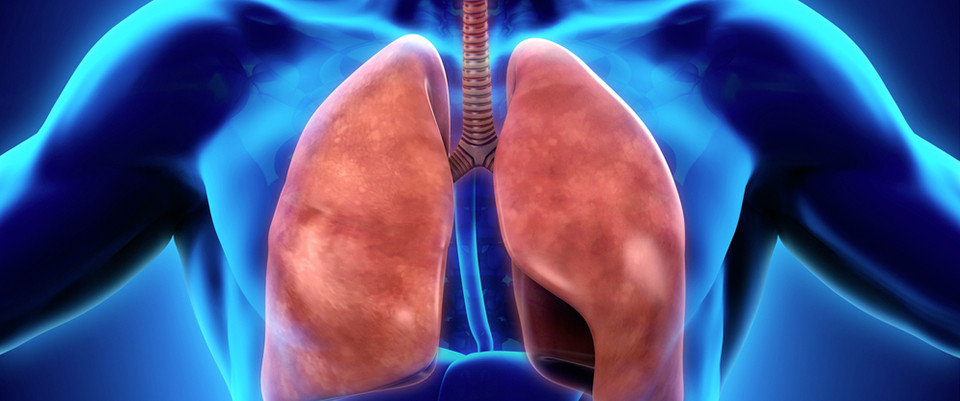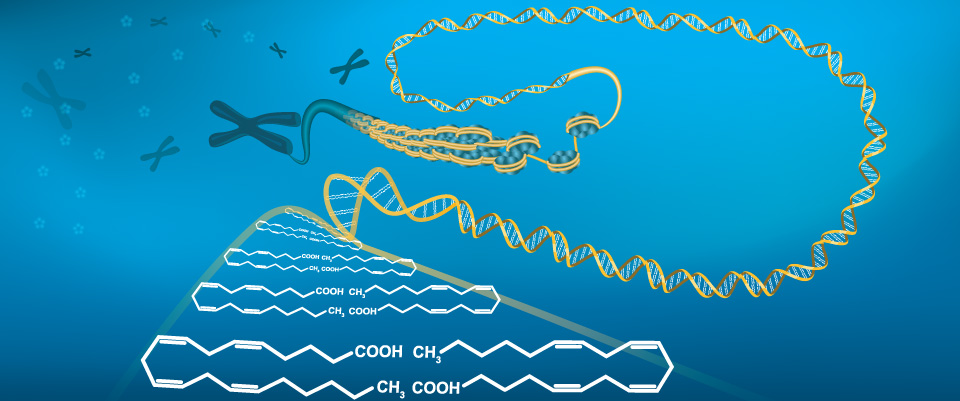PubMed
Global and targeted serum metabolic profiling of colorectal cancer progression.
Related Articles
Global and targeted serum metabolic profiling of colorectal cancer progression.
Cancer. 2017 Oct 15;123(20):4066-4074
Authors: Long Y, Sanchez-Espiridion B, Lin M, White L, Mishra L, Raju GS, Kopetz S, Eng C, Hildebrandt MAT, Chang DW, Ye Y, Liang D, Wu X
Abstract
BACKGROUND: Patients with colorectal adenoma polyps (PLPs) are at higher risk for developing colorectal cancer (CRC). However, the development of improved and robust biomarkers to enable the screening, surveillance, and early detection of PLPs and CRC continues to be a challenge. The aim of this study was to identify biomarkers of progression to CRC through metabolomic profiling of human serum samples with a multistage approach.
METHODS: Metabolomic profiling was conducted with the Metabolon platform for 30 CRC patients, 30 PLP patients, and 30 control subjects, and this was followed by the targeted validation of the top metabolites in an additional set of 50 CRC patients, 50 PLP patients, and 50 controls with liquid chromatography-tandem mass spectrometry. Unconditional multivariate logistic regression models, adjusted for covariates, were used to evaluate associations with PLP and CRC risk.
RESULTS: For the discovery phase, 404 serum metabolites were detected, with 50 metabolites showing differential levels between CRC patients, PLP patients, and controls (P for trend < .05). After validation, the 3 top metabolites (xanthine, hypoxanthine, and d-mannose) were validated: lower levels of xanthine and hypoxanthine and higher levels of d-mannose were found in PLP and CRC cases versus controls. A further exploratory analysis of metabolic pathways revealed key roles for the urea cycle and caffeine metabolism associated with PLP and CRC risk. In addition, a joint effect of the top metabolites with smoking and a significant interaction with the body mass index were observed. An analysis of the ratio of hypoxanthine levels to xanthine levels indicated an association with CRC progression.
CONCLUSIONS: These results suggest the potential utility of circulating metabolites as novel biomarkers for the early detection of CRC. Cancer 2017;123:4066-74. © 2017 American Cancer Society.
PMID: 28640361 [PubMed - indexed for MEDLINE]
metabolomics; +43 new citations
43 new pubmed citations were retrieved for your search.
Click on the search hyperlink below to display the complete search results:
metabolomics
These pubmed results were generated on 2017/10/11PubMed comprises more than millions of citations for biomedical literature from MEDLINE, life science journals, and online books.
Citations may include links to full-text content from PubMed Central and publisher web sites.
Organs on chip approach: a tool to evaluate cancer -immune cells interactions.
Organs on chip approach: a tool to evaluate cancer -immune cells interactions.
Sci Rep. 2017 Oct 06;7(1):12737
Authors: Biselli E, Agliari E, Barra A, Bertani FR, Gerardino A, De Ninno A, Mencattini A, Di Giuseppe D, Mattei F, Schiavoni G, Lucarini V, Vacchelli E, Kroemer G, Di Natale C, Martinelli E, Businaro L
Abstract
In this paper we discuss the applicability of numerical descriptors and statistical physics concepts to characterize complex biological systems observed at microscopic level through organ on chip approach. To this end, we employ data collected on a microfluidic platform in which leukocytes can move through suitably built channels toward their target. Leukocyte behavior is recorded by standard time lapse imaging. In particular, we analyze three groups of human peripheral blood mononuclear cells (PBMC): heterozygous mutants (in which only one copy of the FPR1 gene is normal), homozygous mutants (in which both alleles encoding FPR1 are loss-of-function variants) and cells from 'wild type' donors (with normal expression of FPR1). We characterize the migration of these cells providing a quantitative confirmation of the essential role of FPR1 in cancer chemotherapy response. Indeed wild type PBMC perform biased random walks toward chemotherapy-treated cancer cells establishing persistent interactions with them. Conversely, heterozygous mutants present a weaker bias in their motion and homozygous mutants perform rather uncorrelated random walks, both failing to engage with their targets. We next focus on wild type cells and study the interactions of leukocytes with cancerous cells developing a novel heuristic procedure, inspired by Lyapunov stability in dynamical systems.
PMID: 28986543 [PubMed - in process]
Metabolomic Analysis Reveals That the Drosophila Gene lysine Influences Diverse Aspects of Metabolism.
Metabolomic Analysis Reveals That the Drosophila Gene lysine Influences Diverse Aspects of Metabolism.
Genetics. 2017 Oct 06;:
Authors: St Clair SL, Li H, Ashraf U, Karty JA, Tennessen JM
Abstract
The fruit fly Drosophila melanogaster has emerged as a powerful model for investigating the molecular mechanisms that regulate animal metabolism. A major limitation of these studies, however, is that many metabolic assays are tedious, dedicated to analyzing a single molecule, and rely on indirect measurements. As a result, Drosophila geneticists commonly use candidate gene approaches, which, while important, bias studies towards known metabolic regulators. In an effort to expand the scope of Drosophila metabolic studies, we used the classic mutant lysine (lys) to demonstrate how a modern metabolomics approach can be used to conduct forward genetic studies. Using an inexpensive and well-established gas chromatography-mass spectrometry (GC-MS)-based method, we genetically mapped and molecularly characterized lys by using free lysine levels as a phenotypic readout. Our efforts revealed that lys encodes the Drosophila homolog of Lysine Ketoglutarate Reductase/Saccharopine Dehydrogenase (LKRSDH), which is required for the enzymatic degradation of lysine. Furthermore, this approach also allowed us to simultaneously survey a large swath of intermediate metabolism, thus demonstrating that Drosophila lysine catabolism is complex and capable of influencing seemingly unrelated metabolic pathways. Overall, our study highlights how a combination of Drosophila forward genetics and metabolomics can be used for unbiased studies of animal metabolism and demonstrates that a single enzymatic step is intricately connected to diverse aspects of metabolism.
PMID: 28986444 [PubMed - as supplied by publisher]
Harmonizing Lipidomics: NIST Interlaboratory Comparison Exercise for Lipidomics using Standard Reference Material 1950 Metabolites in Frozen Human Plasma.
Harmonizing Lipidomics: NIST Interlaboratory Comparison Exercise for Lipidomics using Standard Reference Material 1950 Metabolites in Frozen Human Plasma.
J Lipid Res. 2017 Oct 06;:
Authors: Bowden JA, Heckert A, Ulmer CZ, Jones CM, Koelmel JP, Abdullah L, Ahonen L, Alnouti Y, Armando A, Asara JM, Bamba T, Barr JR, Bergquist J, Borchers CH, Brandsma J, Breitkopf SB, Cajka T, Cazenave-Gassiot A, Checa A, Cinel MA, Colas RA, Cremers S, Dennis EA, Evans JE, Fauland A, Fiehn O, Gardner MS, Garrett TJ, Gotlinger KH, Han J, Huang Y, Neo AH, Hyotylainen T, Izumi Y, Jiang H, Jiang H, Jiang J, Kachman M, Kiyonami R, Klavins K, Klose C, Kofeler HC, Kolmert J, Koal T, Koster G, Kuklenyik Z, Kurland IJ, Leadley M, Lin K, Maddipati KR, McDougall D, Meikle PJ, Mellett NA, Monnin C, Moseley MA, Nandakumar R, Oresic M, Patterson RE, Peake D, Pierce JS, Post M, Postle AD, Pugh R, Qui Y, Quehenberger O, Ramrup P, Rees J, Rembiesa B, Reynaud D, Roth MR, Sales S, Schuhmann K, Schwartzman ML, Serhan CN, Shevchenko A, Somerville SE, John-Williams LS, Surma MA, Takeda H, Thakare R, Thompson JW, Torta F, Triebl A, Trotzmuller M, Ubhayasekera SJK, Vuckovic D, Weir JM, Welti R, Wenk MR, Wheelock CE, Yao L, Yuan M, Zhao XH, Zhou S
Abstract
As the lipidomics field continues to advance, self-evaluation within the community is critical. Here, we performed an interlaboratory comparison exercise for lipidomics using Standard Reference Material (SRM) 1950 Metabolites in Frozen Human Plasma, a commercially available reference material. The interlaboratory study comprised 31 diverse laboratories, with each lab using a different lipidomics workflow. A total of 1527 unique lipids were measured across all laboratories, and consensus location estimates and associated uncertainties were determined for 339 of these lipids measured at the sum composition level by five or more participating laboratories. These evaluated lipids detected in SRM 1950 serve as community-wide benchmarks for intra- and inter-laboratory quality control and method validation. These analyses were performed using non-standardized laboratory-independent workflows. The consensus locations were also compared to a previous examination of SRM 1950 by the LIPID MAPS consortium. While the central theme of the interlaboratory study was to provide values to help harmonize lipids, lipid mediators, and precursor measurements across the community, it was also initiated to stimulate a discussion regarding areas in need of improvement.
PMID: 28986437 [PubMed - as supplied by publisher]
Recombinant tissue plasminogen activator induces long-term anxiety-like behaviors via the ERK1/2-GAD1-GABA cascade in the hippocampus of a rat model.
Recombinant tissue plasminogen activator induces long-term anxiety-like behaviors via the ERK1/2-GAD1-GABA cascade in the hippocampus of a rat model.
Neuropharmacology. 2017 Oct 03;:
Authors: Dong MX, Li CM, Shen P, Hu QC, Wei YD, Ren YF, Yu J, Gui SW, Liu YY, Pan JX, Xie P
Abstract
OBJECTIVES: Recombinant tissue plasminogen activator (rtPA) is widely used for patients with thromboembolic disease, and increasing evidence indicates that it can directly induce neurotoxicity independent of its thrombolysis property. Here, we aimed to confirm the long-term effect of rtPA on animal's behavior, and investigate the underlying pathogenesis.
METHODS AND RESULTS: Male Sprague-Dawley rats randomly received a dose of rtPA (10 mg/kg) or sterile saline. Three months later, the animals receiving rtPA displayed anxiety-like behaviors in the open field and novelty-suppressed feeding tests. To investigate the possible pathogenesis, gas chromatography-mass spectrometry-based metabolomics analysis was performed, with 18 differential metabolites identified in the hippocampus 24 h after the treatments. Based upon these differential metabolites, a metabolite-protein integrated network was generated, which indicated that ERK1/2-glutamic acid decarboxylase (GAD) 1-γ aminobutyric acid (GABA) cascade may be related to long-term anxiety-like behaviors. The GABA levels in hippocampus were decreased 24 h post-treatment and three months later, confirmed by a high performance liquid chromatography method. We also examined the expression of GAD1 and GAD2 using western blotting or immunohistochemical staining. Levels of GAD1 were persistently decreased after treatment, while GAD2 levels, GAD1-immunoreactive, and GAD2-immunoreactive neurons showed no significant differences. The underlying pathogenesis also involved activation of ERK1/2, confirmed by increased phospho-ERK1/2 24 h post-treatment.
CONCLUSIONS: RtPA can induce long-term anxiety-like behaviors after a clinical injected dose. The underlying pathogenesis involves the ERK1/2-GAD1-GABA cascade in the hippocampus. This pharmacological side effect of rtPA may further exacerbate post-stroke anxiety disorder for stroke patients.
PMID: 28986280 [PubMed - as supplied by publisher]
Inverse relations of serum phosphatidylcholines and lysophosphatidylcholines with vascular damage and heart rate in patients with atherosclerosis.
Inverse relations of serum phosphatidylcholines and lysophosphatidylcholines with vascular damage and heart rate in patients with atherosclerosis.
Nutr Metab Cardiovasc Dis. 2017 Aug 02;:
Authors: Paapstel K, Kals J, Eha J, Tootsi K, Ottas A, Piir A, Jakobson M, Lieberg J, Zilmer M
Abstract
BACKGROUND AND AIMS: The rapidly growing discipline of lipidomics allows the study of a wide spectrum of lipid species in body fluids and provides new insights into the pathogenesis of cardiovascular disease. We investigated serum phosphatidylcholine (PC) and lysophosphatidylcholine (lysoPC) species in relation to arterial stiffness, hemodynamics, and endothelial dysfunction in symptomatic patients with atherosclerosis and in healthy controls.
METHODS AND RESULTS: Thirty-two patients with peripheral arterial disease (age 61.7 ± 9.0 years), 52 patients with coronary artery disease (age 63.2 ± 9.2 years), and 40 apparently healthy controls (age 60.3 ± 7.1 years) were studied. Serum levels of 90 glycerophospholipids were determined with the AbsoluteIDQ™ p180 kit (BIOCRATES Life Sciences AG, Innsbruck, Austria). The technique of applanation tonometry was used for non-invasive pulse wave analysis and carotid-femoral pulse wave velocity (cf-PWV) assessment. Decreased serum levels of several individual PC and lysoPC species (e.g., PC aa C28:1, PC aa C30:0, PC aa C32:2, PC ae C30:0 and PC ae C34:2, lysoPC a C18:2) were observed for the patient groups in comparison to the healthy subjects. In addition, a considerable number of PCs and lysoPCs were inversely related to either cf-PWV, heart rate, asymmetric dimethylarginine (ADMA) or ADMA/arginine for patients with symptomatic atherosclerosis but not for the controls.
CONCLUSION: We found altered relationships between PC and lysoPC profiles, inflammation, and arterial function in atherosclerotic patients, compared to healthy subjects.
PMID: 28986077 [PubMed - as supplied by publisher]
The SysteMHC Atlas project.
The SysteMHC Atlas project.
Nucleic Acids Res. 2017 Jul 29;:
Authors: Shao W, Pedrioli PGA, Wolski W, Scurtescu C, Schmid E, Vizcaíno JA, Courcelles M, Schuster H, Kowalewski D, Marino F, Arlehamn CSL, Vaughan K, Peters B, Sette A, Ottenhoff THM, Meijgaarden KE, Nieuwenhuizen N, Kaufmann SHE, Schlapbach R, Castle JC, Nesvizhskii AI, Nielsen M, Deutsch EW, Campbell DS, Moritz RL, Zubarev RA, Ytterberg AJ, Purcell AW, Marcilla M, Paradela A, Wang Q, Costello CE, Ternette N, van Veelen PA, van Els CACM, Heck AJR, de Souza GA, Sollid LM, Admon A, Stevanovic S, Rammensee HG, Thibault P, Perreault C, Bassani-Sternberg M, Aebersold R, Caron E
Abstract
Mass spectrometry (MS)-based immunopeptidomics investigates the repertoire of peptides presented at the cell surface by major histocompatibility complex (MHC) molecules. The broad clinical relevance of MHC-associated peptides, e.g. in precision medicine, provides a strong rationale for the large-scale generation of immunopeptidomic datasets and recent developments in MS-based peptide analysis technologies now support the generation of the required data. Importantly, the availability of diverse immunopeptidomic datasets has resulted in an increasing need to standardize, store and exchange this type of data to enable better collaborations among researchers, to advance the field more efficiently and to establish quality measures required for the meaningful comparison of datasets. Here we present the SysteMHC Atlas (https://systemhcatlas.org), a public database that aims at collecting, organizing, sharing, visualizing and exploring immunopeptidomic data generated by MS. The Atlas includes raw mass spectrometer output files collected from several laboratories around the globe, a catalog of context-specific datasets of MHC class I and class II peptides, standardized MHC allele-specific peptide spectral libraries consisting of consensus spectra calculated from repeat measurements of the same peptide sequence, and links to other proteomics and immunology databases. The SysteMHC Atlas project was created and will be further expanded using a uniform and open computational pipeline that controls the quality of peptide identifications and peptide annotations. Thus, the SysteMHC Atlas disseminates quality controlled immunopeptidomic information to the public domain and serves as a community resource toward the generation of a high-quality comprehensive map of the human immunopeptidome and the support of consistent measurement of immunopeptidomic sample cohorts.
PMID: 28985418 [PubMed - as supplied by publisher]
Metabolome and transcriptome profiling reveal new insights into somatic embryo germination in Norway spruce (Picea abies).
Metabolome and transcriptome profiling reveal new insights into somatic embryo germination in Norway spruce (Picea abies).
Tree Physiol. 2017 Jun 28;:1-15
Authors: Dobrowolska I, Businge E, Abreu IN, Moritz T, Egertsdotter U, Plomion C
Abstract
Transcriptome, metabolome and histological profiling were performed on normal and aberrant somatic embryo germinants of Norway spruce (Picea abies L. Karst) providing a simplistic systems biology description of conifer germination. Aberrant germinants (AGs) formed periderm-like tissue at the apical pole and lacked shoot growth above the cotyledons. Transcriptome profiling (RNA-Sequencing) revealed a total of 370 differentially expressed genes at ≥1 or ≤-1 log2-fold change, where 92% were down-regulated in AGs compared with normal germinants (NGs). Genes associated with shoot apical meristem formation were down-regulated in AGs, or not differentially expressed between AGs and NGs. Genes involved in hormone signaling and transport were also down-regulated. Metabolite profiling by gas chromatography-mass spectrometry (MS) and liquid chromatography-MS revealed biochemical difference between AGs and NGs, notably increased levels of sugars including glucose in AGs. Genes involved in glucose signaling were down-regulated and genes involved in starch biosynthesis were up-regulated, suggesting involvement of sugar signaling during late embryo development and germination. The overall results provide new data enabling further studies to confirm potential markers for a normal germination process in conifers.
PMID: 28985382 [PubMed - as supplied by publisher]
A molecular approach to drought-induced reduction in leaf CO2 exchange in drought-resistant Quercus ilex.
A molecular approach to drought-induced reduction in leaf CO2 exchange in drought-resistant Quercus ilex.
Physiol Plant. 2017 Oct 06;:
Authors: Rodríguez-Calcerrada J, Rodrigues AM, Perdiguero P, António C, Atkin OK, Li M, Collada C, Gil L
Abstract
Drought-induced reduction of leaf gas exchange entails a complex regulation of the plant leaf metabolism. We used a combined molecular and physiological approach to understand leaf photosynthetic and respiratory responses of two-year-old Quercus ilex seedlings to drought. Mild drought stress resulted in glucose accumulation while net photosynthetic CO2 uptake (Pn ) remained unchanged, suggesting a role of glucose in stress signaling and/or osmoregulation. Simple sugars and sugar alcohols increased throughout moderate to very severe drought stress conditions, in parallel to a progressive decline in Pn and the quantum efficiency of photosystem II; by contrast, minor changes occurred in respiration rates until drought stress was very severe. At very severe drought stress, 2-oxoglutarate dehydrogenase complex gene expression significantly decreased, and the abundance of most amino acids dramatically increased, especially that of proline and γ-aminobutyric acid (GABA) suggesting enhanced protection against oxidative damage and a re-organization of the tricarboxylic cycle acid (TCA) cycle via the GABA shunt. All together, our results point to Q. ilex drought tolerance being linked to signaling and osmoregulation by hexoses during early stages of drought stress, and enhanced protection against oxidative damage by polyols and amino acids under severe drought stress.
PMID: 28984911 [PubMed - as supplied by publisher]
Remote Sensing between Liver and Intestine: Importance of Microbial Metabolites.
Remote Sensing between Liver and Intestine: Importance of Microbial Metabolites.
Curr Pharmacol Rep. 2017 Jun;3(3):101-113
Authors: Fu ZD, Cui JY
Abstract
Recent technological advancements including metagenomics sequencing and metabolomics have allowed the discovery of critical functions of gut microbiota in obesity, malnutrition, neurological disorders, asthma, and xenobiotic metabolism. Classification of the human gut microbiome into distinct "enterotypes" has been proposed to serve as a new paradigm for understanding the interplay between microbial variation and human disease phenotypes, as many organs are affected by gut microbiota modifications during the pathogenesis of diseases. Gut microbiota remotely interacts with liver and other metabolic organs of the host through various microbial metabolites that are absorbed into the systemic circulation.
PURPOSE OF REVIEW: The present review summarizes recent literature regarding the importance of gut microbiota in modulating the physiological and pathological responses of various host organs, and describes the functions of the known microbial metabolites that are involved in this remote sensing process, with a primary focus on the gut microbiota-liver axis.
RECENT FINDINGS: Under physiological conditions, gut microbiota modulates the hepatic transcriptome, proteome, and metabolome, most notably down-regulating cytochrome P450 3a mediated xenobiotic metabolism. Gut microbiome also modulates the rhythmicity in liver gene expression, likely through microbial metabolites, such as butyrate and propionate that serve as epigenetic modifiers. Additionally, the production of host hormones such as primary bile acids and glucagon like peptide 1 is altered by gut microbiota to modify intermediary metabolism of the host.
SUMMARY: Dysregulation of gut microbiota is implicated in various liver diseases such as alcoholic liver disease, non-alcoholic steatohepatitis, liver cirrhosis, cholangitis, and liver cancer. Gut microbiota modifiers such as probiotics and prebiotics are increasingly recognized as novel therapeutic modalities for liver and other types of human diseases.
PMID: 28983453 [PubMed]
Studying the Differences of Bacterial Metabolome and Microbiome in the Colon between Landrace and Meihua Piglets.
Studying the Differences of Bacterial Metabolome and Microbiome in the Colon between Landrace and Meihua Piglets.
Front Microbiol. 2017;8:1812
Authors: Yan S, Zhu C, Yu T, Huang W, Huang J, Kong Q, Shi J, Chen Z, Liu Q, Wang S, Jiang Z, Chen Z
Abstract
This study was conducted to compare the microbiome and metabolome differences in the colon lumen from two pig breeds with different genetic backgrounds. Fourteen weaned piglets at 30 days of age, including seven Landrace piglets (a lean-type pig breed with a fast growth rate) and seven Meihua piglets (a fatty-type Chinese local pig breed with a slow growth rate), were fed the same diets for 35 days. Untargeted metabolomics analyses showed that a total of 401 metabolites differed between Landrace and Meihua. Seventy of these 401 metabolites were conclusively identified. Landrace accumulated more short-chain fatty acids (SCFAs) and secondary bile acids in the colon lumen. Moreover, expression of the SCFAs transporter (solute carrier family 5 member 8, SLC5A8) and receptor (G protein-coupled receptor 41, GPR41) in the colon mucosa was higher, while the bile acids receptor (farnesoid X receptor, FXR) had lower expression in Landrace compared to Meihua. The relative abundances of 8 genera and 16 species of bacteria differed significantly between Landrace and Meihua, and were closely related to the colonic concentrations of bile acids or SCFAs based on Pearson's correlation analysis. Collectively, our results demonstrate for the first time that there were differences in the colonic microbiome and metabolome between Meihua and Landrace piglets, with the most profound disparity in production of SCFAs and secondary bile acids.
PMID: 28983290 [PubMed]
Metabolomic analysis of insulin resistance across different mouse strains and diets.
Metabolomic analysis of insulin resistance across different mouse strains and diets.
J Biol Chem. 2017 Oct 05;:
Authors: Stöckli J, Fisher-Wellman KH, Chaudhuri R, Zeng XY, Fazakerley DJ, Meoli CC, Thomas KC, Hoffman NJ, Mangiafico SP, Xirouchaki CE, Yang CH, Ilkayeva O, Wong K, Cooney GJ, Andrikopoulos S, Muoio DM, James DE
Abstract
Insulin resistance is a major risk factor for many diseases. However, its underlying mechanism remains unclear in part because it is triggered by a complex relationship between multiple factors including genes and the environment. Here we used metabolomics combined with computational methods to identify factors that classified insulin resistance across individual mice derived from three different mouse strains fed two different diets. Three inbred ILSXISS strains were fed high fat or chow diets and subjected to metabolic phenotyping and metabolomics analysis of skeletal muscle. There was significant metabolic heterogeneity between strains, diet and individual animals. Distinct metabolites were changed with insulin resistance, diet and between strains. Computational analysis revealed 113 metabolites that were correlated with metabolic phenotypes. Using these 113 metabolites, combined with machine learning to segregate mice based on insulin sensitivity we identified C22:1-CoA, C2-carnitine and C16-ceramide as the best classifiers. Strikingly, when these three metabolites were combined into one signature, they classified mice based on insulin sensitivity more accurately than each metabolite on its own or other published metabolic signatures. Furthermore, C22:1-CoA, was 2.3-fold higher in insulin resistant mice and correlated significantly with insulin resistance. We have identified a metabolomic signature comprised of three functionally unrelated metabolites that accurately predicts whole body insulin sensitivity across three mouse strains. These data indicate the power of simultaneous analysis of individual, genetic and environmental variance in mice for identifying novel factors that accurately predict metabolic phenotypes like whole body insulin sensitivity.
PMID: 28982973 [PubMed - as supplied by publisher]
Another case for diet restriction: TAp73-expressing medulloblastomas are stunted by glutamine withdrawal.
Another case for diet restriction: TAp73-expressing medulloblastomas are stunted by glutamine withdrawal.
Genes Dev. 2017 Sep 01;31(17):1715-1716
Authors: Napoli M, Flores ER
Abstract
Medulloblastomas are among the most common malignant brain cancers in the pediatric population and consist of at least four distinct subgroups with unique molecular and genetic features and clinical outcomes. In this issue of Genes & Development, Niklison-Chirou and colleagues (pp. 1738-1753) identify the p53 family member and p73 isoform TAp73 as a crucial factor causing glutamine addiction in aggressive medulloblastomas. Their findings pave the way for the use of glutamine restriction as an adjuvant treatment for TAp73-expressing medulloblastomas.
PMID: 28982757 [PubMed - in process]
Metabolomic profile and nucleoside composition of Cordyceps nidus sp. nov. (Cordycipitaceae): A new source of active compounds.
Related Articles
Metabolomic profile and nucleoside composition of Cordyceps nidus sp. nov. (Cordycipitaceae): A new source of active compounds.
PLoS One. 2017;12(6):e0179428
Authors: Chiriví J, Danies G, Sierra R, Schauer N, Trenkamp S, Restrepo S, Sanjuan T
Abstract
Cordyceps sensu lato is a genus of arthropod-pathogenic fungi, which have been used traditionally as medicinal in Asia. Within the genus, Ophiocordyceps sinensis is the most coveted and expensive species in China. Nevertheless, harvesting wild specimens has become a challenge given that natural populations of the fungus are decreasing and because large-scale culture of it has not yet been achieved. The worldwide demand for products derived from cultivable fungal species with medicinal properties has increased recently. In this study, we propose a new species, Cordyceps nidus, which parasitizes underground nests of trapdoor spiders. This species is phylogenetically related to Cordyceps militaris, Cordyceps pruinosa, and a sibling species of Cordyceps caloceroides. It is found in tropical rainforests from Bolivia, Brazil, Colombia and Ecuador. We also investigated the medicinal potential of this fungus based on its biochemical properties when grown on four different culture media. The metabolic profile particularly that of nucleosides, in polar and non-polar extracts was determined by UPLC, and then correlated to their antimicrobial activity and total phenolic content. The metabolome showed a high and significant dependency on the substrate used for fungal growth. The mass intensities of nucleosides and derivative compounds were higher in natural culture media in comparison to artificial culture media. Among these compounds, cordycepin was the predominant, showing the potential use of this species as an alternative to O. sinensis. Furthermore, methanol fractions showed antimicrobial activity against gram-positive bacteria, and less than 3.00 mg of gallic acid equivalents per g of dried extract were obtained when assessing its total phenolic content by modified Folin-Ciocalteu method. The presence of polyphenols opens the possibility of further exploring the antioxidant capacity and the conditions that may enhance this characteristic. The metabolic composition and biochemical activity indicate potential use of C. nidus in pharmaceutical applications.
PMID: 28636672 [PubMed - indexed for MEDLINE]
FUM2, a Cytosolic Fumarase, Is Essential for Acclimation to Low Temperature in Arabidopsis thaliana.
Related Articles
FUM2, a Cytosolic Fumarase, Is Essential for Acclimation to Low Temperature in Arabidopsis thaliana.
Plant Physiol. 2016 Sep;172(1):118-27
Authors: Dyson BC, Miller MA, Feil R, Rattray N, Bowsher CG, Goodacre R, Lunn JE, Johnson GN
Abstract
Although cold acclimation is a key process in plants from temperate climates, the mechanisms sensing low temperature remain obscure. Here, we show that the accumulation of the organic acid fumaric acid, mediated by the cytosolic fumarase FUM2, is essential for cold acclimation of metabolism in the cold-tolerant model species Arabidopsis (Arabidopsis thaliana). A nontargeted metabolomic approach, using gas chromatography-mass spectrometry, identifies fumarate as a key component of the cold response in this species. Plants of T-DNA insertion mutants, lacking FUM2, show marked differences in their response to cold, with contrasting responses both in terms of metabolite concentrations and gene expression. The fum2 plants accumulated higher concentrations of phosphorylated sugar intermediates and of starch and malate. Transcripts for proteins involved in photosynthesis were markedly down-regulated in fum2.2 but not in wild-type Columbia-0. Plants of fum2 show a complete loss of the ability to acclimate photosynthesis to low temperature. We conclude that fumarate accumulation plays an essential role in low temperature sensing in Arabidopsis, either indirectly modulating metabolic or redox signals or possibly being itself directly involved in cold sensing.
PMID: 27440755 [PubMed - indexed for MEDLINE]
Oxygen Sensing via the Ethylene Response Transcription Factor RAP2.12 Affects Plant Metabolism and Performance under Both Normoxia and Hypoxia.
Related Articles
Oxygen Sensing via the Ethylene Response Transcription Factor RAP2.12 Affects Plant Metabolism and Performance under Both Normoxia and Hypoxia.
Plant Physiol. 2016 Sep;172(1):141-53
Authors: Paul MV, Iyer S, Amerhauser C, Lehmann M, van Dongen JT, Geigenberger P
Abstract
Subgroup-VII-ethylene-response-factor (ERF-VII) transcription factors are involved in the regulation of hypoxic gene expression and regulated by proteasome-mediated proteolysis via the oxygen-dependent branch of the N-end-rule pathway. While research into ERF-VII mainly focused on their role to regulate anoxic gene expression, little is known on the impact of this oxygen-sensing system in regulating plant metabolism and growth. By comparing Arabidopsis (Arabidopsis thaliana) plants overexpressing N-end-rule-sensitive and insensitive forms of the ERF-VII-factor RAP2.12, we provide evidence that oxygen-dependent RAP2.12 stability regulates central metabolic processes to sustain growth, development, and anoxic resistance of plants. (1) Under normoxia, overexpression of N-end-rule-insensitive Δ13RAP2.12 led to increased activities of fermentative enzymes and increased accumulation of fermentation products, which were accompanied by decreased adenylate energy states and starch levels, and impaired plant growth and development, indicating a role of oxygen-regulated RAP2.12 degradation to prevent aerobic fermentation. (2) In Δ13RAP2.12-overexpressing plants, decreased carbohydrate reserves also led to a decrease in anoxic resistance, which was prevented by external Suc supply. (3) Overexpression of Δ13RAP2.12 led to decreased respiration rates, changes in the levels of tricarboxylic acid cycle intermediates, and accumulation of a large number of amino acids, including Ala and γ-amino butyric acid, indicating a role of oxygen-regulated RAP2.12 abundance in controlling the flux-modus of the tricarboxylic acid cycle. (4) The increase in amino acids was accompanied by increased levels of immune-regulatory metabolites. These results show that oxygen-sensing, mediating RAP2.12 degradation is indispensable to optimize metabolic performance, plant growth, and development under both normoxic and hypoxic conditions.
PMID: 27372243 [PubMed - indexed for MEDLINE]
Urinary metabolic phenotyping of mucopolysaccharidosis type I combining untargeted and targeted strategies with data modeling.
Urinary metabolic phenotyping of mucopolysaccharidosis type I combining untargeted and targeted strategies with data modeling.
Clin Chim Acta. 2017 Oct 02;475:7-14
Authors: Tebani A, Schmitz-Afonso I, Abily-Donval L, Héron B, Piraud M, Ausseil J, Brassier A, De Lonlay P, Zerimech F, Vaz FM, Gonzalez BJ, Marret S, Afonso C, Bekri S
Abstract
BACKGROUND: Application of metabolic phenotyping could expand the pathophysiological knowledge of mucopolysaccharidoses (MPS) and may reveal the comprehensive metabolic impairments in MPS. However, few studies applied this approach to MPS.
METHODS: We applied targeted and untargeted metabolic profiling in urine samples obtained from a French cohort comprising 19 MPS I and 15 MPS I treated patients along with 66 controls. For that purpose, we used ultra-high-performance liquid chromatography combined with ion mobility and high-resolution mass spectrometry following a protocol designed for large-scale metabolomics studies regarding robustness and reproducibility. Furthermore, 24 amino acids have been quantified using liquid chromatography coupled to tandem mass spectrometry (LC-MS/MS). Keratan sulfate, Heparan sulfate and Dermatan sulfate concentrations have also been measured using an LC-MS/MS method. Univariate and multivariate data analyses have been used to select discriminant metabolites. The mummichog algorithm has been used for pathway analysis.
RESULTS: The studied groups yielded distinct biochemical phenotypes using multivariate data analysis. Univariate statistics also revealed metabolites that differentiated the groups. Specifically, metabolites related to the amino acid metabolism. Pathway analysis revealed that several major amino acid pathways were dysregulated in MPS. Comparison of targeted and untargeted metabolomics data with in silico results yielded arginine, proline and glutathione metabolisms being the most affected.
CONCLUSION: This study is one of the first metabolic phenotyping studies of MPS I. The findings might help to generate new hypotheses about MPS pathophysiology and to develop further targeted studies of a smaller number of potentially key metabolites.
PMID: 28982054 [PubMed - as supplied by publisher]
Single Cell Neurometabolomics.
Single Cell Neurometabolomics.
ACS Chem Neurosci. 2017 Oct 05;:
Authors: Qi M, Philip M, Yang N, Sweedler JV
Abstract
Metabolomics, the characterization of metabolites and their changes within biological systems, has seen great technological and methodological progress over the past decade. Most metabolomic experiments involve the characterization of the small-molecule content of fluids or tissue homogenates. While these microliter and larger volume metabolomic measurements can characterize hundreds to thousands of compounds, the coverage of molecular content decreases as sample sizes are reduced to the nanoliter and even to the picoliter volume range. Recent progress has enabled the ability to characterize the major molecules found within specific individual cells. Especially within the brain, a myriad of cell types are colocalized and oftentimes only a subset of these cells undergo changes in both healthy and pathological states. Here we highlight recent progress in mass spectrometry-based approaches used for single cell metabolomics, emphasizing their application to neuroscience research. Single cell studies can be directed to measuring differences between members of populations of similar cells (i.e., oligodendrocytes), as well as characterizing differences between cell types (i.e., neurons and astrocytes), and are especially useful for measuring changes occurring during different behavior states, exposure to diets and drugs, neuronal activity, and disease. When combined with other -omics approaches such as transcriptomics, and with morphological and physiological measurements, single cell metabolomics aids fundamental neurochemical studies, has great potential in pharmaceutical development, and should improve the diagnosis and treatment of brain diseases.
PMID: 28982006 [PubMed - as supplied by publisher]
MicroRNA-661 modulates redox and metabolic homeostasis in colon cancer.
MicroRNA-661 modulates redox and metabolic homeostasis in colon cancer.
Mol Oncol. 2017 Oct 05;:
Authors: Gómez de Cedrón M, Acín Pérez R, Sánchez-Martínez R, Molina S, Herranz J, Feliu J, Reglero G, Enríquez JA, Ramírez de Molina A
Abstract
Cancer cell survival and metastasis are dependent on metabolic reprogramming that is capable of increasing resistance to oxidative and energetic stress. Targeting these two processes can be crucial for cancer progression. Herein, we describe the role of microRNA-661 (miR661) as epigenetic regulator of colon cancer (CC) cell metabolism. miR661 induces a global increase in reactive oxygen species (ROS), specifically in mitochondrial superoxide anions (SO(-) ), which appears to be mediated by decreased carbohydrate metabolism and pentose phosphate pathway, and by a higher dependency on mitochondrial respiration. miR661 overexpression in non-metastatic human CC cells induces an epithelial-to-mesenchymal transition (EMT) phenotype, and a reduced tolerance to metabolic stress. This seems to be a general effect of miR661 in CC, since metastatic CC cell metabolism is also compromised upon miR661 overexpression. We propose hexose 6 phosphate dehydrogenase (H6PD) and pyruvate kinase M2 (PKM2) as two key players related to the observed metabolic reprogramming. Finally, the clinical relevance of miR661 expression levels in stage-II and III CC patients is discussed. In conclusion, we propose miR661 as a potential modulator of redox and metabolic homeostasis in CC.
PMID: 28981199 [PubMed - as supplied by publisher]











